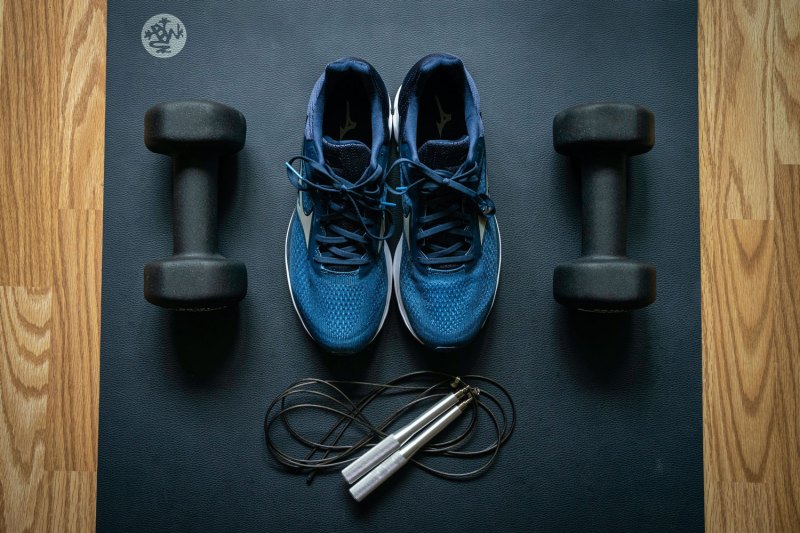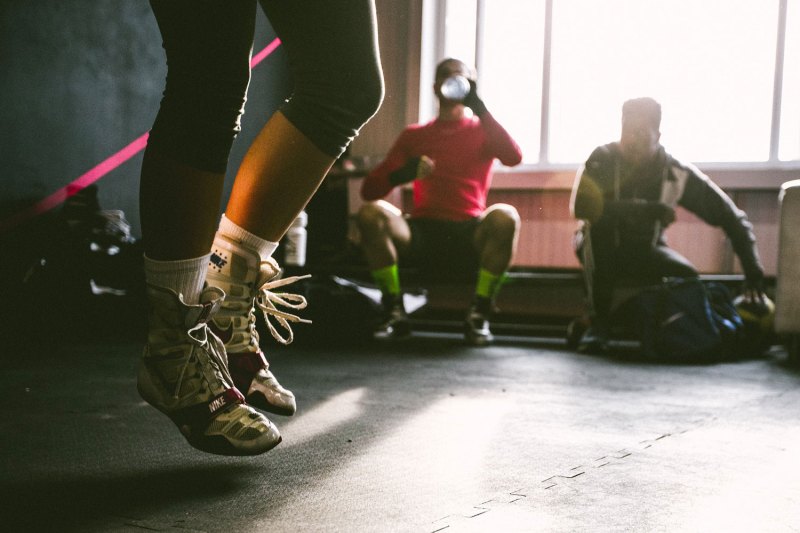
Unless you’re 7 years old or a regular at the local boxing gym, jumping rope probably isn’t part of your daily workout routine. But, if you’re looking for an easy, inexpensive way to get your blood pumping and burn fat fast, it should be. It’s deceptively simple, but jumping rope is one of the single best cardio fitness exercises, and not only that, but there are so many benefits of jumping rope.

The benefits of jumping rope and why you should get started
It’s inexpensive
Let’s get the most obvious benefit out of the way: Jumping rope is cheap. Compared to a gym membership, buying a treadmill, or splurging on a new Peloton, it’s incredibly inexpensive. For less than $30, you can score a complete jump rope set (with or without weights) to get started immediately.
It’s simple and easy
Poor form is one of the fastest ways to injure yourself while exercising. Thankfully, jumping rope is hard to do wrong. Just start with an appropriately sized rope, jump that rope, and repeat at your own pace.
It’s great for recovery
Because jumping rope is so simple, it’s an excellent way to recover from sports-related injuries. Many athletes and physical therapists regard it as the ideal baseline exercise. This is because jumping rope aligns and engages your entire body. Done correctly, it promotes good posture and form while getting you back into “fighting shape.”
It’s versatile and perfect for any fitness level
Jumping rope can be as moderate or as high-intensity as you want it to be, making it a perfect workout for everyone from couch potatoes to pro athletes. Beginners can start with slower, intermittent jump sessions of 30 seconds on, 30 seconds off, and build up their stamina from there.

It’s effective for weight loss
One of the most obvious benefits of jumping rope is that it’s amazingly effective for weight loss. Even a modest jump rope session is high-intensity and gets your heart rate up fast. By most estimates, it burns between 300 and 500 calories in just 15 minutes, depending on the intensity of your workout. According to the CDC, vigorous exercises are as much as two times as effective as their moderate-intensity counterparts. If you never seem to have time in your daily schedule to squeeze in a workout, now you can.
It boosts agility and coordination
The mechanics of jumping rope encourage good hand-eye-foot coordination. Maintaining a steady jumping rhythm for 10 minutes or more allows your brain to fully connect and engage with your entire body, so you’re constantly moving in sync. This makes it a great training routine for any sport or activity that involves quick changes in motion — everything from hockey and football to boxing and mountain biking.
It improves bone density
The intense repetition of jumping rope — and the landing, in particular — puts stress on your entire body. Like any properly performed exercise, it’s a good kind of stress that forces your body to respond positively over time. It increases resilience in your legs by building muscle and stronger bones in the process.
It builds explosive strength
Unlike basic cardio activities like jogging or rowing, jumping rope often involves explosive power. High-intensity rope jumping requires jumping, recovering, and repeating for hundreds of repetitions in a single workout — all of which builds explosive power for vigorous sports and outdoor activities.
It’s a full-body workout
Don’t be fooled by the simplicity of the movement. Jumping rope engages multiple muscle groups throughout your body, including your calves, hamstrings, quads, glutes, core, shoulders, and arms. This provides a well-rounded workout that strengthens and tones your entire physique.

It’s a solid warm-up
Jumping rope doesn’t have to be the entree in your fitness regimen. It works just as well as an appetizer before the main event. Kickstart your regular routine with a quick, three- to five-minute burst on the rope. This is more than enough to get your heart pumping before any regular cardio or weight-training workout.
It has mental benefits, too
Jumping rope can be a fun and engaging activity that can help relieve stress and improve your mood. The rhythmic nature of the exercise can be meditative and promote relaxation.
You can travel with jump ropes
Working out while traveling isn’t easy. Hotel gyms are often lacking, and no one has yet to find an easy way to pack a dumbbell set and a balance ball in carry-on luggage. But jump ropes are compact and lightweight, making them an ideal go-anywhere fitness solution.



